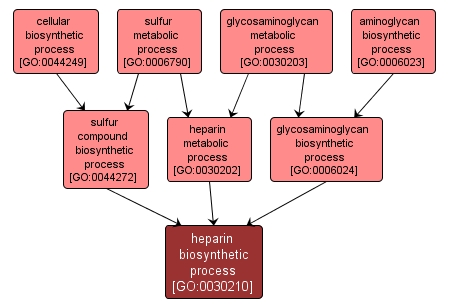GO TERM SUMMARY
|
| Name: |
heparin biosynthetic process |
| Acc: |
GO:0030210 |
| Aspect: |
Biological Process |
| Desc: |
The chemical reactions and pathways resulting in the formation of heparin, any member of a group of glycosaminoglycans of average Mr (6000-20000), consisting predominantly of alternating alpha1->4-linked D-galactose and N-acetyl-D-glucosamine-6-sulfate residues. |
Synonyms:
- heparin formation
- heparan sulfate biosynthetic process
- heparin anabolism
- heparin biosynthesis
- heparin synthesis
|
|

|
INTERACTIVE GO GRAPH
|














